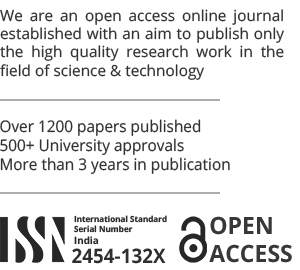This paper is published in Volume-11, Issue-1, 2025
Area
Data Science And Information Technology
Author
Ananya Chandra, Mahesh Tiwari
Org/Univ
National Post Graduate College, Lucknow, Uttar Pradesh, India
Keywords
DNA Storage, Data Growth, Archival Storage, Synthetic Biology, Long-Term data Preservation, Digital Data Explosion, Next-Gen Data Storage
Citations
IEEE
Ananya Chandra, Mahesh Tiwari. Encoding Digital Information in DNA: Advances, Techniques, and Applications, International Journal of Advance Research, Ideas and Innovations in Technology, www.IJARIIT.com.
APA
Ananya Chandra, Mahesh Tiwari (2025). Encoding Digital Information in DNA: Advances, Techniques, and Applications. International Journal of Advance Research, Ideas and Innovations in Technology, 11(1) www.IJARIIT.com.
MLA
Ananya Chandra, Mahesh Tiwari. "Encoding Digital Information in DNA: Advances, Techniques, and Applications." International Journal of Advance Research, Ideas and Innovations in Technology 11.1 (2025). www.IJARIIT.com.
Ananya Chandra, Mahesh Tiwari. Encoding Digital Information in DNA: Advances, Techniques, and Applications, International Journal of Advance Research, Ideas and Innovations in Technology, www.IJARIIT.com.
APA
Ananya Chandra, Mahesh Tiwari (2025). Encoding Digital Information in DNA: Advances, Techniques, and Applications. International Journal of Advance Research, Ideas and Innovations in Technology, 11(1) www.IJARIIT.com.
MLA
Ananya Chandra, Mahesh Tiwari. "Encoding Digital Information in DNA: Advances, Techniques, and Applications." International Journal of Advance Research, Ideas and Innovations in Technology 11.1 (2025). www.IJARIIT.com.
Abstract
In 2020 approximately 64 zettabytes of Data were generated and it was predicted that by 2025 this number will be greater than twice that of it. This prediction is proving itself as every day approximately 402.74 million Terabytes of data is created and as of 2024 the number has risen to 147 Zettabytes already and it's assumed that this amount will be 181 Zettabytes by the end of 2025. This data primarily includes IoT data which is the fastest growing segment of data which is then followed by social media. The existing storage technologies cannot cater to the needs of the Zettabyte Era, as they have considerable issues like limited durability, high power consumption, and the environmental impact they cause. DNA is nature's best alternative to these problems and can store such high amounts of data for a longer period without very little decay. One gram of DNA can store up to 215 Petabytes of data. Its longevity of thousands of years and enormous information density without harming the environment by generating less e-waste makes it a promising archival storage medium.

